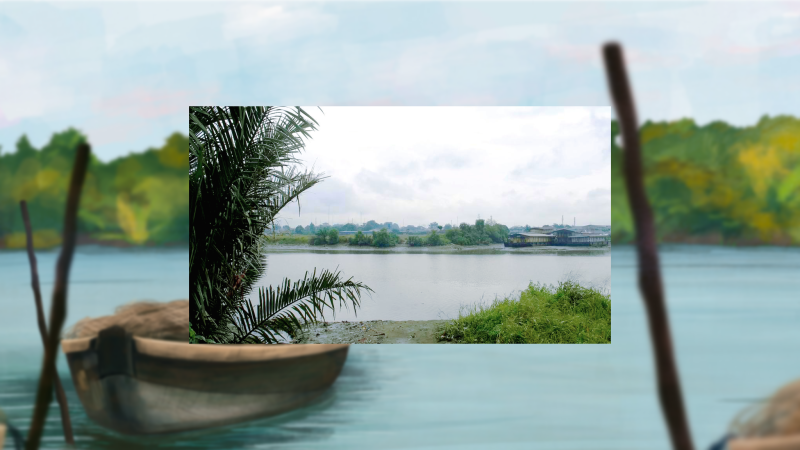“Slowly, quietly, the Niger Delta is being mauled beyond repair.
…And the Niger Delta is the world.”
— Ike Okonta and Oronto Douglas, Where Vultures Feast
ibi minji faari (translated from Kalabari Ijo: “the good water is going away”) is an exploration of the riverine landscapes of the oil-producing region of Nigeria—the Niger Delta.
Formed with numerous creeks and rivers leading into the Atlantic Ocean, the Niger Delta is ecologically significant as the third largest mangrove forest in the world. It also has global significance as a zone of extraction—notably for the historic extraction of humans during the transatlantic slave trade, the extraction of palm oil during British colonisation, and the current extraction of crude oil from multinational petroleum companies such as Shell-BP. Centuries of extraction from this region has contributed to loss of land and people—such as that of the Ogoniland and its people—and a loss of connection to the water.
ibi minji faari is an exhibition created by ONCA’s Associate Artist Tokini Fubara in celebration of Remembrance Day for Lost Species (RDLS). ibi minji faari builds on Tokini’s previous works on race, space, and borders, turning to the creeks surrounding their place of origin in Port Harcourt city. Using time-based work, this exhibition deploys a poetics of landscape in search of good waters.
This exhibition is supported by the University of Sussex through its Arts and Humanities Research Council (AHRC) Impact Acceleration Account grant. It also includes videography from the Port-Harcourt based filmmaker, Osazee Murban Irabor (@Murban_Art) and previous RDLS ONCA artists.
Curated by Tokini Fubara and Susuana Amoah.
About the artist
Tokini Fubara is a Niger-Deltan creative practitioner and lecturer working in animation, game design, and installation art. They concluded their doctorate at the University of Sussex on the colonial project of biometric surveillance and its contemporary applications in migration. Their works include I’m New Here (2015), an animated documentary and photovoice project on queer African migrants in Winnipeg, Canada; an installation piece Border Ritual (2016) shown at the Hastings Art Forum; Border Ritual 2.0 (2017), a video game exhibited during London Design Week as part of Code Liberation’s group show at the Victoria and Albert Museum; and DREAMS OF DISGUISE (2018) a 3D animation and video game on migration and biometric surveillance first exhibited at ONCA Gallery.
About Remembrance Day for Lost Species
Remembrance Day for Lost Species (RDLS) or Lost Species Day, 30 November, is an annual opportunity to explore the stories of critically endangered species, cultures, lifeways, habitats and ecological communities or those driven to extinction by unjust power structures and exploitation, past and ongoing. Established in 2011, Remembrance Day for Lost Species, is driven by a coalition of artists, educators, scientists, historians and campaigners including ONCA.
Opening times
Saturday 30 November, 6 – 8pm: Private View
Wednesday 4 December, 1:30 – 5:30pm
Thursday 5 December, 1:30 – 5:30pm
Friday 6 December, 1:30 – 5:30pm
Wednesday 11 December, 1:30 – 5:30pm
Thursday 12 December, 1:30 – 5:30pm
Friday 13 December, 1:30 – 5:30pm

